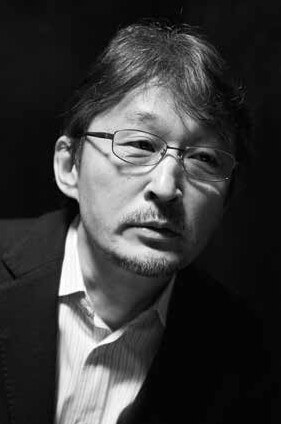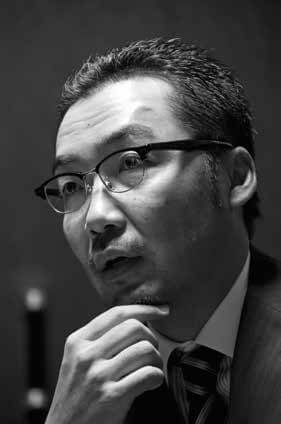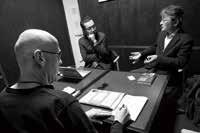Issue:
Two years after the Fukushima nuclear crisis began, two media experts dissect how it has been covered by the media. Takashi Uesugi is a freelance journalist and author of several books on the Fukushima crisis, including Terebi Wa Naze Heiki De Uso WoTsukunoka? (“Why does television tell so many lies?”). He is also one of the founders of The Free Press Association of Japan (www.fpaj.jp), an attempt to offer an alternative to Japan’s press club system. Mamoru Ito is professor of media and cultural studies at Waseda University and author of Terebi Wa Genpatsu Jiko Dou Tsutaetenoka? (“How did television cover the nuclear accident?). Both are highly critical of the media’s performance.

Mamoru Ito: “Each channel was telling people it was safe . . . at the same time they forbidding their own employees to report from there because of the dangers.” 
Takashi Uesugi: “An hour and 10 minutes after the explosion, the image suddenly disappeared from Japan . . . You could still see it on YouTube but not on TV.”
Uesugisan, is it true that you have been banned from the media because of your comments on Fukushima?
Until two years ago, I had regular programs on television and radio. Now the only regular radio that I do is Tokyo FM. I don’t do TBS radio [where he had a regular slot]. I have no hope of appearing on NHK or on the commercial networks. I used to be a regular or semi regular on several shows but now not even once. I was also a regular guest on radio shows, but not anymore.
I found out two years ago that the electric utilities in Japan are major TV sponsors. That year, they spent ¥70~88.8 billion on advertising, more than Panasonic’s ¥70 billion and Toyota’s ¥50 bilion. When I started claiming that this amounted to bribery of the media by Tepco, I no longer was asked to appear on radio shows.
Ito-san, tell us about your research. You surveyed Japanese television coverage of the first week of the nuclear crisis and found that only a single antinuclear expert had appeared, right?
That’s right. Before the disaster, TBS had a history of inviting experts from the [anti nuclear] citizens’ nuclear information center; the director of TBS had a personal contact with them. They also always invited pronuclear people from the socalled nuclear village as a balance. After the crisis, Fuji TV had a guy called Yuko Fujita, who has always been anti nuclear, on once. On the afternoon of March 11, he said there was a possibility of a meltdown happening. He was never allowed back on the screen.
Some foreign correspondents believe that the government and the media had a duty to avoid triggering panic in the week after March 11. It was fine for the foreign media, perhaps, to sometimes report sensationally, but local journalists had a very heavy responsibility. What’s your take on this?
Ito: When the Fukushima Daiichi number one reactor exploded, a television camera for Fukushima Central Television captured the image and they broadcast it two minutes later. The reporters themselves were afraid about what was happening inside, but the head of the station had to report this. In other words, when journalists have information, even without knowing what it really means, it’s their responsibility to report it. They also reported which way the wind was blowing. Did Fukushima residents panic when they saw this video clip? No. Fukushima Central TV repeatedly asked the big Japanese broadcasting networks to report this explosion quickly. But it took an hour and 10 minutes before it was reported on Nihon TV, Fuji TV and NHK. And they all reported it at the same time.
They are all completely different broadcasting companies, so how does that happen that they report it at the same time?
Ito: I don’t think it was a coincidence, but I can’t prove it. Even in Fukushima, all the networks monitor the local broadcasts and they would have known about the explosion report. They have some kind of collective agreement on what to cover. When the three TV stations finally aired the foot age at the same time, they had almost the same explanation [for the blast]: they said it was a result of artificially releasing the vapor from a squib valve.
Uesugi: There is an image of the first reactor explosion that ran in the New York Times and another on the BBC. An hour and 10 minutes after the explosion, the image suddenly disappeared from Japan; the Japanese people couldn’t get access to it for over a year on the mainstream media. You could still see it on YouTube but not on TV.
I turned to the European Broadcasting Union, who had bought the rights for coverage. I insisted on humanitarian grounds the residents should have the information and then decide for themselves what to do after seeing the image. As soon as I reported it, the commercial broadcasting companies in Japan demanded I remove that image from my homepage. It has become taboo in Japan.
Ito: Really, it was the government and the media who actually caused the panic. In a crisis like this, they feel the need to speak in a single voice. But when the government and the media together report that “everything is safe,” it has the opposite effect of making people worry. The government should distribute alternative information and admit there are a lot of things that are not clear. The biggest problem during the nuclear crisis was that there wasn’t that kind of informative environment.
Uesugi: It was not the public, but the government, METI and the mass media that were panicking. Allowing different views through the media is healthy. When there are different views you have to think for yourself and avoid panic. That’s why I called the Prime Minister’s Office during the crisis and asked them to let foreign journalists and freelance reporters for the internet and magazines into their press conferences. That would have made different types of information available and subdue panic. It was the press clubs that were responsible for causing panic.
Ito: Around March 15 or 16, the central government directly asked Fukushima City if they wanted to evacuate the population of 400,000. The city refused but the media decided not to report this because they thought it would cause panic. The government once considered extending the evacuation zone that far. Then later, when the 20 millisieverts issue rose [the government upped the annual limit of “acceptable” radiation limits in schools from 1 to 20 MSv], they didn’t evacuate young children those who should most definitely have been taken out of Fukushima and Koriyama cities.
Why do you think journalists for the mainstream media in Japan stayed out of the 20km evacuation zone, despite the demand for scoops about what was going on there?
Ito: One of my friends once said, “Japan’s journalism is compliance journalism.” Each channel was telling the people that it was safe to stay near the area at the same time they were forbidding their own employees to report within 30km of the plant because of the dangers. There was a real double standard but the employees could not go against that rule.
Uesugi: Members of the press clubs and the government were openly saying, “My wife’s hometown is in Kyushu, so I sent her back there” or “I let my child go to Singapore.” They were doing this from March 15. But as Itosan has said, on TV and in the newspapers, they were saying that everything was safe. Even some of the politicians sent their families out of Japan.
Looking back, what are the key mistakes made by the Japanese media and the foreign media?
Ito: I think the British newspaper, The Sun, carried some awful reports, very sensational. Some of the foreign press exaggerated the crisis. But we have to look at differences. There is a huge difference between German TV and Japanese TV, for example. In Japan, the scientists who appear on TV work for universities and are naturally close to the government. In Germany, more and more scientists collect independent scientific knowledge and get involved with antinuclear power movements or the Green Party.

In Japan, the establishment has too much power, and it has gotten worse after March 11. There is no freedom of speech inside the mainstream media. There are many people who know what is going on and want to speak out, but they are censored.
Uesugi: I think the nuclear sensationalism is the fault of the Japanese government and the press clubs for not letting the foreign media into their press conferences and for not making their reports accurate enough. I think the foreign media did better than the Japanese media, in the sense that they shared different voices.
The German and Norwegian media, for example, were among the first to report the radiation map. The Washington Post was the first to show the diagram of the meltdown. Foreign journalists also reported from inside the evacuation areas.
Ito: In a transnational crisis like this, even scientists have very different views on what should be done. The media should provide scientific data to the people and the government that will help them make more efficient decisions. But the media have not learned how to use communication technology; they simply assumed it was safe when the government said it was safe, just like back in the bad old days.
Uesugi: We have to be modest about the truth and point out which media was wrong and which was right. Otherwise, journalists end up doing the same thing as the government: they make a mistake, don’t admit it, and try to hide it. Unless this system is improved, I don’t think anything will change. In the end, people who are not told the truth will not trust the media. We have to make a proper accident investigation and confront our own mistakes.
David McNeill writes for The Independent, The Economist, The Chronie of Higher Education and other publications. He is the co-author of Strong in the Rain: Surviving Japan’s Earthquake, Tsunami and Fukushima Nuclear Disaster.

